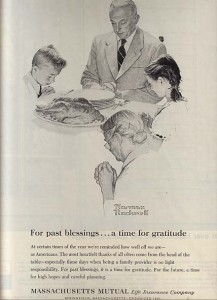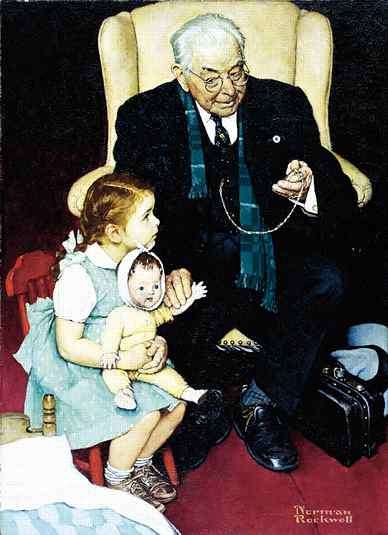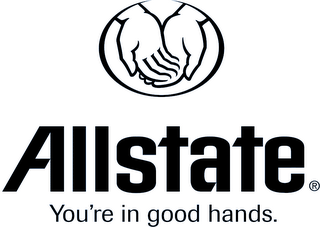Lawyering isn’t where the money is…Some of you, I suspect, may have seen a scheme like this elsewhere…
A guest blog from Jason Paris, a trial attorney here in New York:
—————————————————–
 I came up with an idea, a good business idea, which might need some fine tuning, but here it is. I am going to start a new business.
I came up with an idea, a good business idea, which might need some fine tuning, but here it is. I am going to start a new business.
This is the model. I take money from people telling them that I will pay them when something happens. I want a lot of money, and therefore I need to find something that people use a lot – I need a mass market. People drink soda, eat food, drive cars and get haircuts. I will have too much opposition from the food and drink industry to screw with them, someone has already taken the car racket.
So I am left with the haircut. Everyone gets a haircut. I am thinking that I should collect money from anyone who is ever going to have a haircut, i.e., everyone. In return I will promise if a barber or a hairstylist cuts the person’s ear, I will pay him, make him or her whole, pay the medical bills, provide salon-side assistance, put him or her at rest, send flowers, make him or her feel special, protected, in peace so that he or she could continue to live their wholesome life in his or her special way.
I am insuring against the risk of being cut in the ear during a haircut. Starting investment in my venture, ground level, is 25 million, in return for 5% of the profits. This is the best business opportunity of your life, you just do not know it yet.
Now how do I sell this idea, millions of people going through life with thousands of haircuts without having anyone cutting their ears? To sell my product, I have to scare the people. I hire a number of scientists and advertising people and they come up with numbers and statistics. They show the carnage that could be caused by having one’s ear cut during a haircut, the irreparable trauma from which one could never recover, the instances where children were killed, the sharp edges of scissors, the slow motion of a scissor cutting through the layers of skin in an ear.
 I advertise. I tell them that they could trust me. They are in good hands. Like a good neighbor, I’ll always be there. When they have my insurance card in their wallet, they would sleep better. I am always there for them in the time of the tragedy.
I advertise. I tell them that they could trust me. They are in good hands. Like a good neighbor, I’ll always be there. When they have my insurance card in their wallet, they would sleep better. I am always there for them in the time of the tragedy.
But the business is still not picking up speed the way I want it to. What should I do? I should pass a law. It should be mandatory for anyone who is ever going to have a haircut to have insurance for it. I agree that I will provide minimum protection under the law. To make sure that people do not evade the law (that they do not avoid paying me), the law provides penalties. Those who do not have an insurance card for a haircut cannot have one. If a salon gives a haircut to a patron who does not have a haircut insurance card, it will lose its license, pay a penalty not to exceed $250,000 and/or imprisonment of 5 years.
Now, finally, money starts flowing in. So I decide that who the hell are the people to see what my promise is in writing before they buy my insurance. I am not showing it to them. Anyway they have no option other than to buy it if they want to have a haircut. So I will give them a copy of my promise only after they buy the insurance.
Am I wrong? Of course not. There are some claims, here and there. Some butcher turned a hairstylist cutting someone’s ear, so I have to pay. I am paying, but it annoys me; I hate it.
Suddenly, one year the claims are a few too many. This really pisses me off. I hear that some poor schmuck in Brooklyn who couldn’t pay his rent and was about to be evicted from his apartment with his kids, you know the low class immigrant types, told his cousin barber to cut his ear so he could get the insurance payout. This drove me crazy. It is like cutting flesh out of me. I have to deal with this.
These staged ear cuttings must stop. I am going to raise my insurance rates on EVERYONE. I will tell everyone that since I have to pay an illegitimate claim, everyone has to bear the burden. I was pissed off when I said it, and never thought people could buy it. But they did.
They thought my raising the rates was justified. So I kind of like this staged ear cutting phenomena. Because the longer it is there, the more ammunition I have in my favor. How do I ensure that it is there for a long term?
I will assign people in my company just to find it. Then I have to make sure that the attorney general has an “ear cutting” unit, the district attorney has an ear cutting unit, the United States Attorney has an ear cutting unit, and the Insurance Department has such a unit. We will have a hotline for anonymous calls for staged ear cuttings, so all those people who hate their neighbors or relatives will report such claims, even it is not true. To justify these units’ existence and their paychecks, they have to find something, right? Even if they have to stage a staged ear cutting, catch the poor bastard and prosecute him or her, who deserves it anyway.
 I will award the efforts of the ear cutting units, by publicity, photo shoots, awards for their dedication to public service, for their zealous efforts on behalf of the people of this great state. They are the people who fight to eradicate the fraud and criminal elements engaged in ear cuttings from our society.
I will award the efforts of the ear cutting units, by publicity, photo shoots, awards for their dedication to public service, for their zealous efforts on behalf of the people of this great state. They are the people who fight to eradicate the fraud and criminal elements engaged in ear cuttings from our society.
I want to make sure that the words “fraud,” “crime” and “staged” are always associated with this type of claim. When we take them down, we take down the people whose ears were cut, the hair salons, the barber shops, the medical facilities, and their attorneys – the whole conspiracy ring. We send the message!
I should not lose focus because I need these staged ear cuttings. Because while we are in the attack mode, the people are not going to look at me. I hate when people look at me. I have nothing in common with them. But there is something more that I do not like, it has been bothering me since the beginning-that I have to pay so much for this stupid injury.
Since it is now mandatory for everyone to pay me, I want to limit what I have to pay out. I will pay the poor schmucks’ EMS and ER and hospital treatment, but beyond that I will not pay, unless there is a serious ear cut. I looked at most of my claims and most fall into a simply cut with bandages. I do not want to pay for these claims anymore.
So we pass a law that I only pay for serious ear cuts, and we define it to mean only complete amputation of the ear, rupture of the ear drums (we make it plural so that only both ear drums ruptures fall into this category), disfigurement that you cannot cover (for most people it could always be covered with hair), permanent deafness (we leave it unclear so that in the future we will argue before a judge that it only applies to both ears, otherwise why did I (the legislature) say “permanent”, but I recognize that I might lose this battle.
Then we place the burden on the people whose ears have been cut to prove that the ear cut was serious. Let them prove it that it is serious. I have to be vigilant every step of the way, I have to always come up with more stuff for them to prove; I fight this battle in court. I really do not have to because I won this battle a long time ago, but it is just in my nature. I am a fighter, I fight against the adverse forces, the dark cloud, i.e., the injured people who are all out there to get my money.
 We also make it difficult for the doctors and hospitals to collect. We, I, pass laws to make it so difficult for health care providers to get paid that no one will touch those whose ears have been cut. We put in the laws the words “fraud” and “staged” so those who doubt me have nothing more to doubt.
We also make it difficult for the doctors and hospitals to collect. We, I, pass laws to make it so difficult for health care providers to get paid that no one will touch those whose ears have been cut. We put in the laws the words “fraud” and “staged” so those who doubt me have nothing more to doubt.
We forever stain those who in any way touch those whose ears have been cut. Let’s throw them a bone, give them something, I will ease the serious injury threshold a little bit, but not too much. I want to keep them in check. I love this country that let’s me get away with so much. We should cherish this opportunity to be free.
This investment opportunity is only open to a few like-minded leaders.
 New Yorkers surrendered certain rights with the birth of the No-Fault laws. We can no longer bring actions unless we have suffered a “serious injury.” In exchange, we are supposed to get guaranteed medical/economic benefits up to $50,000 in exchange for the premiums that we pay.
New Yorkers surrendered certain rights with the birth of the No-Fault laws. We can no longer bring actions unless we have suffered a “serious injury.” In exchange, we are supposed to get guaranteed medical/economic benefits up to $50,000 in exchange for the premiums that we pay.




